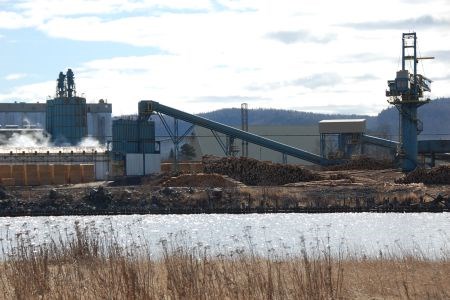Thunder Bay was making its best sales pitch in November to convince Cliffs Natural Resources to build its ferrochrome processing plant on the shore of this northwestern Ontario port city.
A delegation led by Mayor Keith Hobbs had scheduled a mid-month trip to the international miner's Cleveland headquarters during the same week that company's executives were staging public open houses in Thunder Bay and Sudbury.
Though Sudbury is considered a frontrunner among four potential Northern Ontraio communities to land the electric arc furnaces to process ore from its James Bay chromite deposit, Thunder Bay has no intentions of giving up the ship.
John Mason, the city's mining services project manager, concedes Sudbury does have direct rail access to a vital rail junction at Nakina and offers an “excellent” brownfield site north of the city, at Capreol, but Thunder Bay has put together an enticing package.
Cliffs has repeatedly stated that onerous power prices in Ontario, compared to neighbouring provinces, could be a potential dealbreaker in siting the furnaces in the province.
But Mason said Thunder Bay has a novel solution incorporating the former coal-fired generating station on the waterfront and the city's port infrastructure.
The Ontario Power Generation (OPG) has operated the plant largely as a stand-by facility, running at only 15 per cent capacity, over the last two years. With 306 megawatts of available generating capacity, Mason said that should easily meet Cliffs' furnace requirements.
He adds there's been dialogue with the Ministry of Energy and OPG about the availability of that facility.
With the miner proposing to direct ship one million tonnes of chromite annually, possibly to overseas customers, Mason said the port plays right into their hands.
“We feel the Seaway has tremendous attributes in terms of shipping that product,” which would amount to about 40 per cent of annual mine production.”
The city has both Canadian National and Canadian Pacific rail connections, along with a coal-handling facility and conveyor system at Thunder Bay Terminals that once serviced the generating station, which is being converted to natural gas.
Through an alliance with the Fort William First Nation, there are about 700 acres of available industrial land on the reserve.
The premium site is the former Mission Mill, once an AbitibiBowater pulp and paper plant, that was scrapped by American Iron and Metal.
“We feel the advantage that Thunder Bay has relies on the port, shipping and alliance with Fort William First Nation,” said Mason.
The city has commissioned an internal transportation and energy study to the positive attributes on direct shipping to Europe.
Mason said there could be significant advantages to Cliffs if Detroit-area steel mills were included in the mix.
“Material could hypothetically come from a ferrochrome processing facility on Thunder Bay's shores directly to steel mills.”
Mason said while many communities focus on the ferrochrome processing, the entire northwest and First Nations stand to reap “tremendous benefits” from a potential James Bay mine, mill and the related infrastructure.
“Look at the entire project. Municipalities throughout Northern Ontario are going to receive benefits and I think Thunder Bay is positioned to receive a lot of the mine-mill benefit, and potentially the ferrochrome benefit as well.”
Despite their best pitch, Mason said power issues remain the outstanding challenge.
“The power thing is huge with the ferrochrome plant, and with the Osiskos and Stillwaters of this world. With bulk mining techniques, you're crushing massive amounts of material of between 45,000 and 70,000 tonnes a day. The energy costs to crush that amount of material are monumental.”
One mining executive told him his company spent $24 million in energy last year with a provincial rebate of more than $4 million. “It's a good start, but we still can't compete with Quebec and Manitoba in power. We have to look at other attributes to sell the province.”




